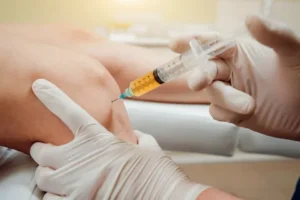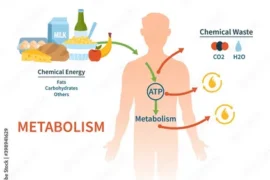Osteoarthritis (OA) is a debilitating condition that affects millions worldwide, limiting mobility and causing chronic pain. While several treatment options exist, ranging from medications to surgical interventions, many patients continue to seek more effective and less invasive alternatives.
Recently, innovations in biomaterials and regenerative medicine have opened up new possibilities for treating osteoarthritis. One such promising avenue is the use of injectable self-lubricating supramolecular polymer hydrogels loaded with platelet lysate. These advanced materials could offer improved joint lubrication, enhanced tissue regeneration, and reduced inflammation, potentially transforming the way osteoarthritis is managed.
In this blog post, we will explore the mechanisms, benefits, and future implications of this cutting-edge osteoarthritis treatment. From understanding the basic science behind injectable supramolecular hydrogels to examining the role of platelet lysate in tissue healing, we’ll break down the latest research and discuss how these technologies could improve patient outcomes.

Understanding Osteoarthritis: The Challenge of Joint Degeneration
Osteoarthritis is primarily characterized by the gradual breakdown of cartilage, the tissue that cushions the ends of bones in joints. As cartilage deteriorates, bones can begin to rub against each other, leading to pain, swelling, and decreased mobility. The condition is progressive, meaning that symptoms often worsen over time, especially in the absence of effective treatment.
Current osteoarthritis treatments include physical therapy, nonsteroidal anti-inflammatory drugs (NSAIDs), corticosteroid injections, and joint replacement surgery. While these methods can help alleviate symptoms, they do little to address the underlying degeneration of cartilage. This is where the self-lubricating supramolecular polymer hydrogels come into play. These innovative materials aim to offer both joint lubrication and regenerative capabilities, targeting the core issues at the heart of osteoarthritis.
What Are Self-Lubricating Supramolecular Polymer Hydrogels?
Self-lubricating supramolecular polymer hydrogels represent a class of biomaterials that are designed to mimic the natural lubricating properties of healthy synovial fluid. Synovial fluid is the viscous substance found in joint cavities that reduces friction and absorbs shock during movement. In osteoarthritis, the quality of this fluid is compromised, contributing to joint stiffness and discomfort.
A supramolecular polymer hydrogel consists of a network of polymer chains that are physically crosslinked through non-covalent interactions, such as hydrogen bonding, metal coordination, or host-guest interactions.
These materials are particularly interesting for osteoarthritis treatment because they can be injectable, meaning they can be delivered directly into the joint via a minimally invasive procedure. Once injected, the hydrogel forms a three-dimensional matrix that can spread across the joint surface, offering lubrication and mechanical support.
The self-lubricating properties of these hydrogels come from their ability to retain water and reduce friction between moving parts of the joint. This helps to ease movement and can lead to a reduction in pain and stiffness. Moreover, the injectable nature of these hydrogels makes them a desirable option for patients seeking alternatives to surgical interventions.
Platelet Lysate: Enhancing the Healing Process
While hydrogels can provide structural support and lubrication, they do not inherently possess regenerative capabilities. This is where platelet lysate comes into play. Platelet lysate is a biologically active component derived from blood platelets, rich in growth factors and cytokines that promote tissue healing and regeneration.
When incorporated into injectable supramolecular hydrogels, platelet lysate offers a dual-action approach to osteoarthritis treatment. First, the hydrogel provides immediate mechanical relief by lubricating the joint. Second, the platelet lysate works at the cellular level to stimulate cartilage regeneration, reduce inflammation, and accelerate tissue repair.
The combination of these two components addresses both the symptomatic and degenerative aspects of osteoarthritis. Patients receiving this osteoarthritis treatment could benefit from reduced pain and inflammation while also seeing improvements in joint function and mobility over time.
How Injectable Supramolecular Hydrogels Work in the Joint
One of the most significant advantages of injectable hydrogels is their ability to conform to the irregular surfaces of damaged cartilage. Upon injection, the supramolecular polymer hydrogel adapts to the shape of the joint, filling in gaps and creating a smooth surface for the bones to glide over. This results in immediate pain relief and improved range of motion.
Moreover, these hydrogels are designed to be biodegradable, meaning that they will naturally break down over time without causing harm to the surrounding tissues. As the hydrogel degrades, the platelet lysate it contains is gradually released, providing a sustained regenerative effect. This controlled release ensures that the healing process is supported over an extended period, offering long-term benefits to the patient.
The self-lubricating properties of the hydrogel also make it an ideal solution for patients with advanced osteoarthritis, where joint lubrication is significantly reduced. By mimicking the natural viscosity and elasticity of synovial fluid, these hydrogels can dramatically reduce friction, leading to improved comfort and mobility.
Clinical Potential and Future Research Directions
While injectable self-lubricating supramolecular polymer hydrogels loaded with platelet lysate hold great promise for the treatment of osteoarthritis, more research is needed to fully understand their long-term effects and optimal usage protocols.
Initial studies have shown promising results, with patients reporting significant reductions in pain and improvements in joint function. However, larger clinical trials are necessary to validate these findings and ensure the safety and efficacy of these materials.
Researchers are also exploring ways to further enhance the properties of these hydrogels, such as by improving their mechanical strength, optimizing the release of platelet lysate, and incorporating additional bioactive compounds that could further support tissue regeneration.
There is also interest in developing personalized hydrogels tailored to individual patient needs, taking into account factors such as the severity of cartilage damage, age, and overall health.
Conclusion: A New Frontier in Osteoarthritis Treatment
The development of injectable self-lubricating supramolecular polymer hydrogels loaded with platelet lysate represents a significant step forward in the field of osteoarthritis treatment. By combining advanced biomaterials with the body’s natural healing mechanisms, this approach offers a potential solution to both the symptoms and underlying causes of osteoarthritis.
As research continues to advance, these hydrogels could become a mainstay in the management of osteoarthritis, providing patients with a minimally invasive, highly effective treatment option. If you or a loved one is struggling with osteoarthritis, this emerging technology could offer hope for improved mobility, reduced pain, and a better quality of life.
We would love to hear your thoughts on this innovative approach to osteoarthritis treatment. Feel free to leave a comment below and share your experiences or questions regarding injectable supramolecular polymer hydrogels and platelet lysate. Let’s keep the conversation going!





